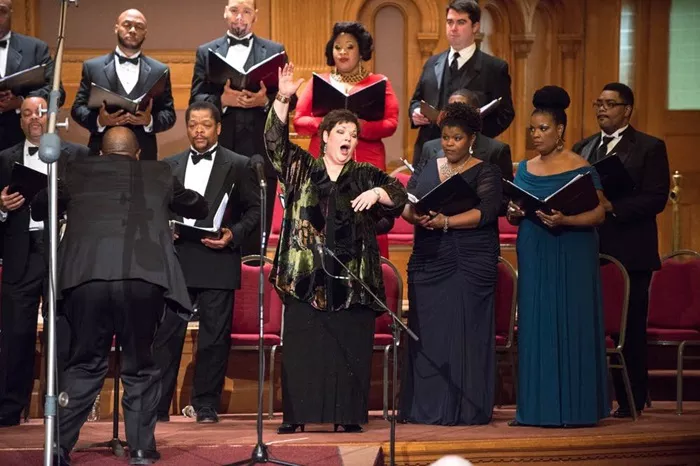Choral music, a cornerstone of classical music, intricately weaves together the voices of singers in rich harmonies that evoke deep emotions and timeless beauty. In this comprehensive guide, we delve into the world of classical choral music, exploring its history, key composers and works, performance techniques, and its enduring impact on music lovers worldwide.
I. Understanding Classical Choral Music
Classical choral music encompasses a vast array of compositions written for multiple voices, often performed by a choir accompanied by instruments or a cappella. Its origins can be traced back to ancient religious and ceremonial music, evolving over centuries into a diverse and vibrant art form that continues to captivate audiences with its emotive power and intricate vocal textures.
II. Historical Evolution
Early Origins: Choral music’s roots can be found in ancient civilizations such as Greece and Rome, where choral performances were integral to religious rituals, theatrical productions, and communal celebrations. The blending of voices in harmonic unity served not only as a form of artistic expression but also as a means of cultural and spiritual connection.
Medieval and Renaissance Period: The medieval and Renaissance eras witnessed a flourishing of choral music in sacred settings, with composers like Palestrina and Josquin des Prez creating polyphonic masterpieces for choirs in cathedrals and courts across Europe. These compositions, often based on sacred texts and liturgical themes, exemplified the intricate interplay of voices and the development of complex harmonic structures.
Baroque Era: The Baroque period saw a further refinement of choral music, with composers like Johann Sebastian Bach elevating the genre to new heights of artistic expression. Bach’s choral compositions, such as the Mass in B Minor and the St. Matthew Passion, are revered for their intricate counterpoint, emotive depth, and spiritual resonance, showcasing the pinnacle of Baroque choral artistry.
Classical and Romantic Periods: The classical and romantic eras brought forth a wealth of choral masterpieces from composers like Mozart, Beethoven, and Brahms. Mozart’s Requiem, Beethoven’s Symphony No. 9 (Choral), and Brahms’ German Requiem are enduring examples of choral works that blend symphonic grandeur with vocal brilliance, embodying the emotional range and thematic richness of the period.
20th Century and Beyond: The 20th century marked a period of innovation and experimentation in choral music, with composers like Benjamin Britten, Eric Whitacre, and John Rutter pushing boundaries and exploring new sonic possibilities. Britten’s War Requiem, Whitacre’s “Lux Aurumque,” and Rutter’s “Gloria” are emblematic of the diverse styles and influences that have shaped modern choral repertoire, from avant-garde textures to lush harmonies and innovative vocal techniques.
III. Key Composers and Their Works
Johann Sebastian Bach: Bach’s contributions to choral music are monumental, with works like the Mass in B Minor representing the epitome of Baroque choral artistry. His intricate fugues, soaring chorales, and deeply spiritual compositions continue to inspire awe and admiration among performers and listeners alike.
Wolfgang Amadeus Mozart: Mozart’s choral repertoire spans a wide range of genres, from sacred masses and requiems to operatic choruses and choral symphonies. His Requiem remains a towering masterpiece, blending sublime melodies with poignant expressions of grief and transcendence, leaving an indelible mark on the choral canon.
Ludwig van Beethoven: Beethoven’s Symphony No. 9, with its iconic choral finale featuring the “Ode to Joy,” stands as a testament to the unity of humanity and the power of music to uplift and inspire. The symphony’s grandeur, thematic richness, and profound message of universal brotherhood continue to resonate with audiences worldwide.
Johannes Brahms: Brahms’ German Requiem is a deeply moving work that offers solace and contemplation, blending lush harmonies with heartfelt expressions of comfort and hope. Its themes of mortality, redemption, and eternal rest speak to the universal human experience, making it a beloved piece in the choral repertoire.
Benjamin Britten: Britten’s choral compositions, such as the War Requiem and A Ceremony of Carols, showcase his innovative approach to vocal writing and powerful storytelling. The War Requiem, in particular, juxtaposes texts from the Latin Mass for the Dead with poems by Wilfred Owen, creating a poignant meditation on war, sacrifice, and reconciliation.
Eric Whitacre: Whitacre’s works have garnered widespread acclaim for their lush harmonies, ethereal textures, and emotive power. Pieces like “Lux Aurumque” and “Sleep” exemplify Whitacre’s ability to create immersive sonic landscapes that transport listeners to transcendent realms of beauty and emotion.
IV. Performance and Interpretation
Choral performances require meticulous preparation and attention to detail. Choirs must achieve vocal blend, balance, and precise diction to convey the composer’s intentions effectively. Conductors play a crucial role in shaping the interpretation, guiding the choir through dynamics, phrasing, and emotional nuances to bring the music to life with authenticity and depth.
V. Impact and Influence
Classical choral music has a profound impact on listeners, evoking a range of emotions from joy and reverence to introspection and awe. Its universal themes and timeless beauty transcend cultural boundaries, making it a cherished art form worldwide. Choral performances in sacred spaces, concert halls, and community settings provide moments of connection, inspiration, and spiritual upliftment for audiences of all ages and backgrounds.
VI. The Future of Classical Choral Music
As we look to the future, classical choral music continues to evolve with contemporary composers exploring new sounds, themes, and technologies. Collaborations between choirs, composers, and multimedia artists are pushing the boundaries of what choral music can achieve, incorporating elements of improvisation, electronic music, and interdisciplinary collaboration to create innovative and immersive experiences for audiences.
VII. Conclusion
In conclusion, classical choral music stands as a testament to the power of human voices united in harmony. Its rich history, diverse repertoire, and enduring impact make it a treasure trove of artistic expression and cultural heritage. Whether performing centuries-old masterpieces or embracing innovative new works, choirs and composers alike continue to celebrate the timeless beauty of choral music, enriching our lives and inspiring generations to come.

